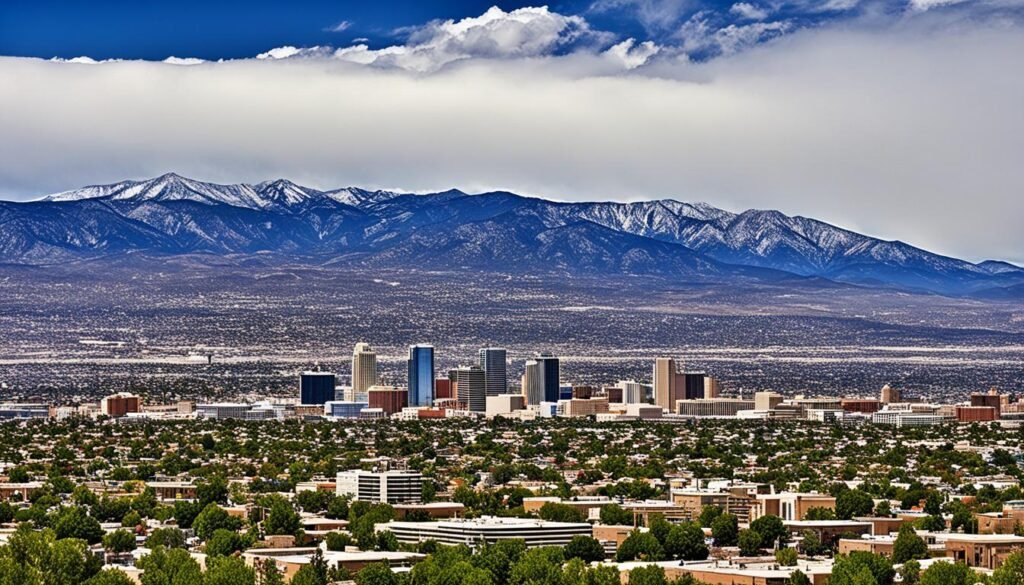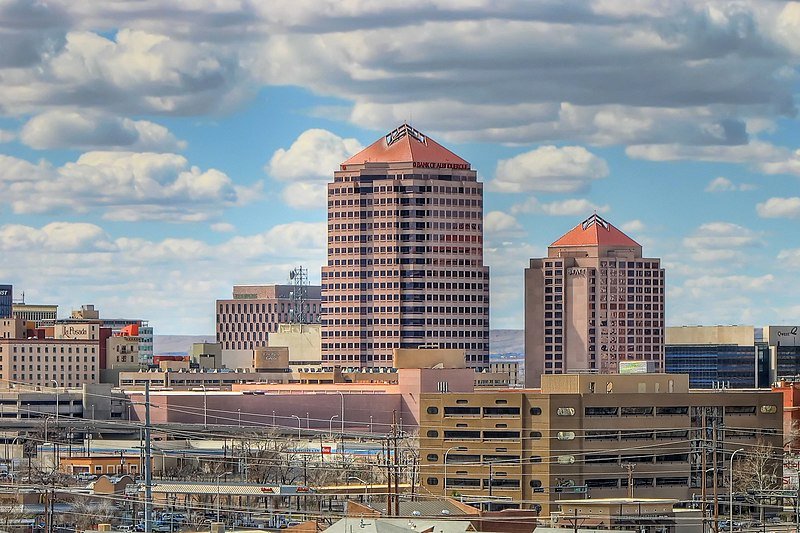Albuquerque, New Mexico, sits at a unique elevation that influences everything from its weather patterns to health outcomes and outdoor activities. Nestled in the high desert, the city’s elevation of approximately 5,312 feet (1,619 meters) above sea level makes it one of the highest major cities in the United States. This high-altitude setting shapes the local climate, impacts physical health, and contributes to Albuquerque’s distinct charm. In this article, we’ll explore Albuquerque’s elevation in detail, uncover how it affects life in the city, and offer tips on how to adjust to the altitude if you plan to visit.
Understanding Albuquerque’s Elevation
Albuquerque’s elevation of 5,312 feet (1,619 meters) places it in the category of high-altitude cities. To put it into perspective:
- Denver, Colorado, known as the “Mile-High City,” is slightly higher at 5,280 feet.
- Santa Fe, New Mexico, is even higher at 7,199 feet.
- Most major U.S. cities sit well below 1,000 feet in elevation, making Albuquerque’s altitude particularly unique.
Albuquerque’s location in the high desert along the Rio Grande Valley and near the Sandia Mountains gives it a mix of desert and mountainous characteristics. This contributes to the city’s dry climate, with low humidity and large temperature swings between day and night.
How Albuquerque’s Elevation Affects Weather

1. Temperature and Climate
Due to its elevation, Albuquerque experiences a semi-arid climate with mild winters and hot summers. However, the high elevation moderates the heat compared to lower desert areas.
- Summer temperatures average between 60°F (16°C) at night and 90°F (32°C) during the day.
- Winter temperatures often drop below freezing at night but remain mild during the day, averaging around 50°F (10°C).
- The thin atmosphere at high elevation leads to greater exposure to sunlight, making it feel warmer than the actual temperature.
2. Precipitation and Snowfall
Albuquerque receives an average of 9 inches of precipitation per year, mostly during the summer monsoon season. Snowfall is relatively light due to the dry climate, averaging around 10 inches annually — mostly in the surrounding Sandia Mountains rather than the city itself.
3. Air Quality and Visibility
The high elevation and dry climate contribute to exceptional air quality and visibility. On clear days, you can see up to 60 miles in any direction, with stunning views of the Sandia Mountains and the Rio Grande Valley.
Health Impacts of Albuquerque’s Elevation
High elevation affects the human body in several ways. Visitors and new residents may notice physical changes as their bodies adjust to the thinner air and reduced oxygen levels.
1. Altitude Sickness
At over 5,000 feet, the air pressure and oxygen levels are lower than at sea level. This can cause altitude sickness, especially for those who aren’t accustomed to high elevation. Symptoms include:
- Headache
- Shortness of breath
- Fatigue
- Nausea
To combat altitude sickness, it’s important to:
- Stay hydrated
- Limit physical activity during the first 24–48 hours
- Eat light, carb-rich meals to maintain energy levels
2. Increased Sun Exposure
With a thinner atmosphere, Albuquerque receives more intense UV radiation. This increases the risk of sunburn and skin damage. Visitors should wear sunscreen, sunglasses, and protective clothing when outdoors.
3. Improved Athletic Performance (After Acclimation)
Once acclimated to the elevation, athletes often find improved endurance and lung capacity. Training at high altitude increases red blood cell production, which enhances oxygen delivery to muscles. This is why professional athletes often train in high-altitude locations like Albuquerque.
Outdoor Activities and Sports at High Elevation
Albuquerque’s elevation creates a playground for outdoor enthusiasts. The high desert setting combined with nearby mountains offers year-round opportunities for hiking, biking, and more.
1. Hiking and Mountain Biking
The Sandia Mountains offer some of the best hiking and biking trails in the Southwest. Popular trails include:
- La Luz Trail – A challenging hike with an elevation gain of over 3,200 feet.
- Embudito Trail – A moderate trail with stunning views of the city and valley below.
2. Ballooning
Albuquerque is famous for the annual International Balloon Fiesta, the largest hot air balloon festival in the world. The city’s elevation and stable weather patterns create ideal conditions for ballooning.
3. Skiing and Snowboarding
While Albuquerque itself sees little snow, the Sandia Peak Ski Area is just a short drive away, offering several runs and a scenic tramway.
How to Prepare for High Elevation in Albuquerque
If you’re planning to visit or move to Albuquerque, here are some tips to help you adjust to the high altitude:
✅ Take It Slow – Give your body time to adjust, especially if you’re coming from a low-altitude location.
✅ Stay Hydrated – The dry air and high altitude can lead to rapid dehydration. Drink plenty of water throughout the day.
✅ Watch for Signs of Altitude Sickness – If you experience headaches or fatigue, take a break and rest.
✅ Protect Yourself from the Sun – Apply sunscreen, wear a hat, and use sunglasses to protect yourself from strong UV rays.
✅ Eat High-Carb Meals – Carbs help your body use oxygen more efficiently, which can ease the effects of high altitude.
Why Albuquerque’s Elevation Matters
Albuquerque’s elevation isn’t just a number—it’s a defining feature of the city’s identity. From its sunny climate to the health effects of thin air, the altitude shapes everyday life. It’s also a key reason why Albuquerque is a hub for outdoor sports, athletic training, and international events like the Balloon Fiesta. Understanding how elevation influences Albuquerque will help you appreciate the city’s unique character and better prepare for your visit.
Final Thoughts
Albuquerque’s elevation of 5,312 feet above sea level gives the city its distinct climate, stunning views, and unique health benefits and challenges. Whether you’re visiting for a weekend or planning to make it your home, knowing how elevation impacts life in Albuquerque will help you make the most of your time in this high-desert city.
Quantum Fiber Reviews: Speed, Reliability & Customer Feedback






